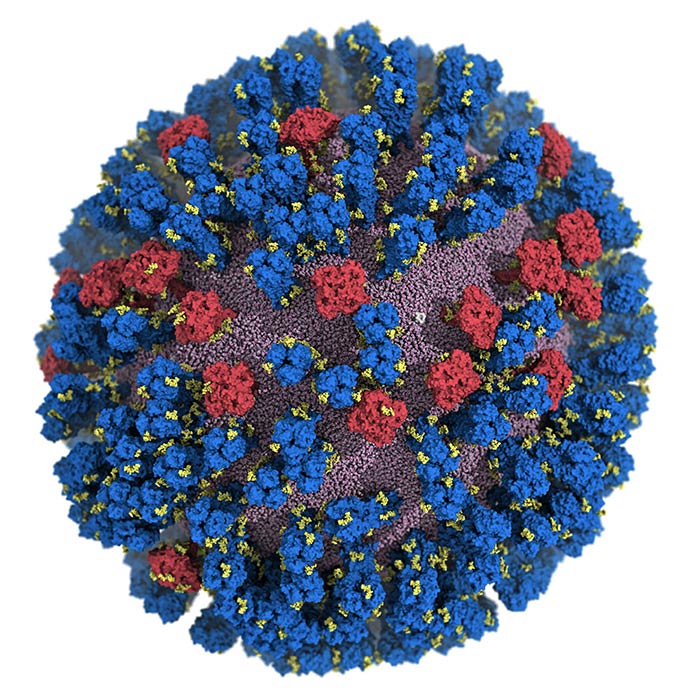A computer simulation depicts the H1N1 influenza virus at 160 million atom resolution. Lorenzo Casalino/Amaro Lab/UC San Diego
The SARS-CoV-2 virus and the disease it causes, COVID-19, have justifiably focused most of the world’s attention in recent years. At last count, COVID-19 had cumulatively killed nearly 7 million people (1.1 million in U.S.) since the pandemic began and accounted for more than 753 million known cases.
In the U.S. alone, The Commonwealth Fund estimates two years of vaccines have prevented 18 million additional hospitalizations and more than 3 million additional deaths. For that reason, the FDA has recently outlined a plan for an annual COVID booster, not unlike the yearly flu shot.
While that debate goes on, research continues its search for a universal flu vaccine, which generates an estimated 1 billion cases worldwide each year, of which 3-5 million are severe and up to 650,000 die from flu-related causes.
In a new study, Distinguished Professor of Chemistry and Biochemistry Rommie Amaro and colleagues at UC San Diego have created an atomic-level computer model of the H1N1 flu virus, which reveals previously unrealized vulnerabilities that might be exploited by a universal vaccine, rather than getting a shot reformulated annually.
You can read more here and watch a video.
